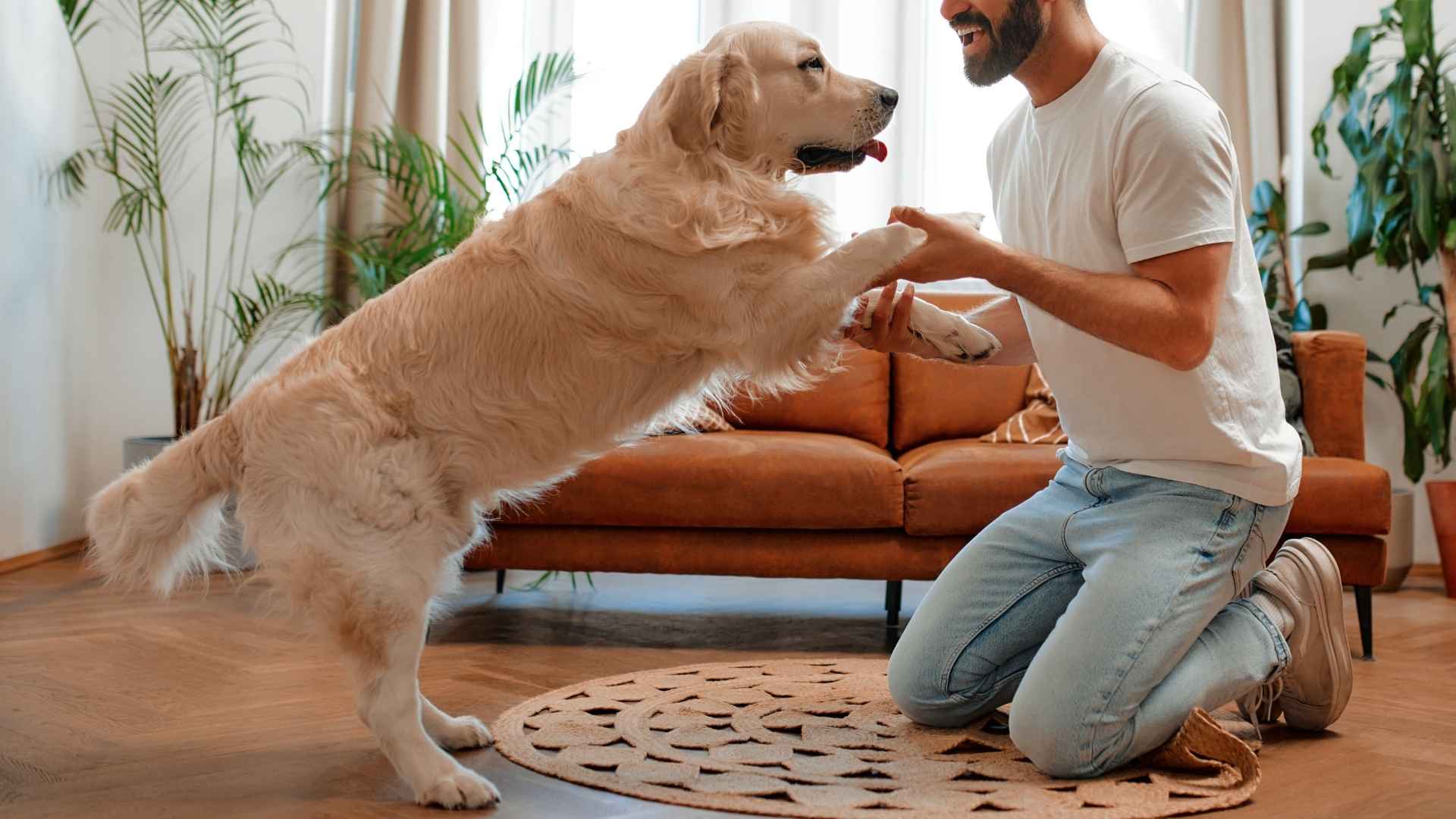Pet therapy has become an increasingly popular and impactful form of emotional support, especially for individuals with disabilities, the elderly, and those living with dementia. While the word “therapy” might suggest dogs performing complex tasks or specialized medical duties, these specific dog breeds offer something simpler—but just as powerful: comfort and companionship to those in need.
Traditionally, therapy dogs are seen as calm, composed animals quietly easing stress and offering emotional support. But what if some of the most effective therapy dogs are the ones who can’t help but wiggle with excitement and greet the world with uncontainable joy?
Welcome to the world of hyperactive therapy dogs—a delightful mix of energy, empathy, and enthusiasm. These dogs don’t just bring comfort; they bring life to the room. Their tails wag like helicopters, their presence is electrifying, and their love is delivered through constant engagement. While they may not sit still for long periods, they excel at spreading happiness through play, interaction, and their unmistakable zest for life.
Here, we’ll explore the most active dog breeds that shine as emotional support animals. So if you’ve been wondering whether high-energy dogs can thrive in therapy roles, the answer is a loud, enthusiastic “yes!” Let’s meet the breeds that prove that being a little extra can make them extraordinary healers.
Hyperactive Therapy Dog Breeds
1. Border Collie
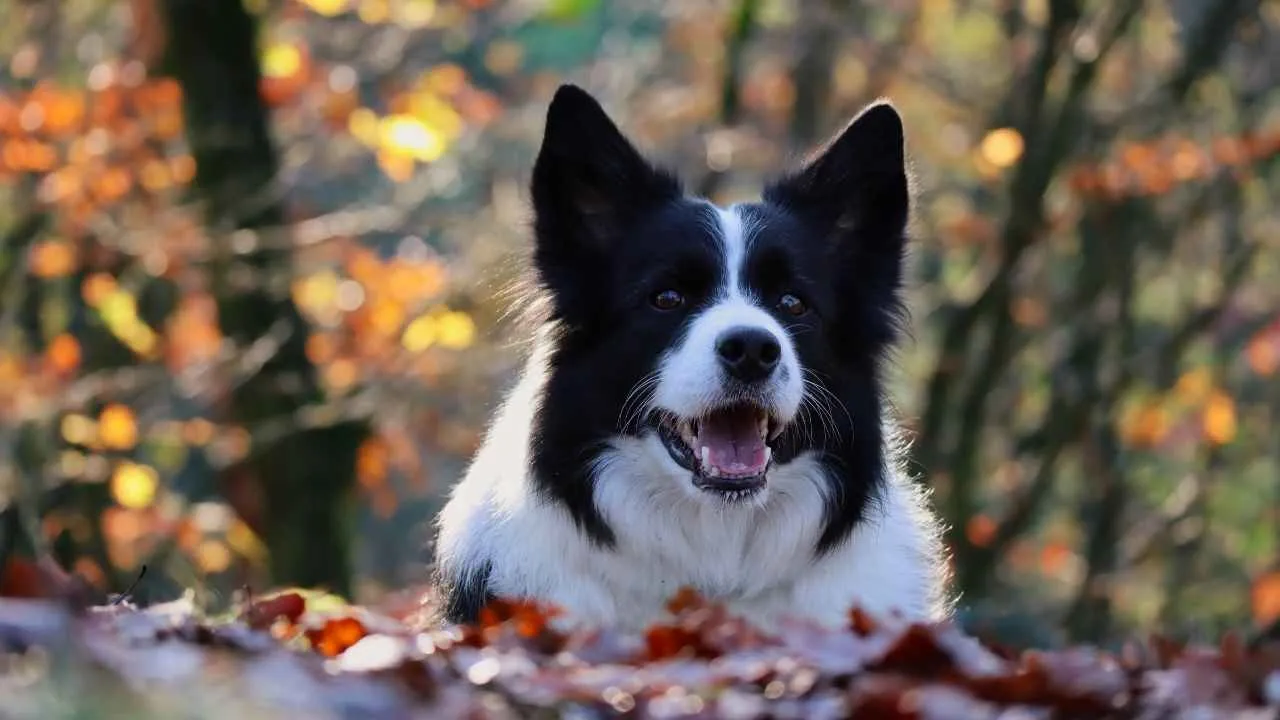
If you could bottle the energy of a Border Collie, you’d power a small city—and still have enough left to launch a rocket. This best dog breed doesn’t just have brains; they have batteries that never seem to run out.
Originally bred as exceptional herding dogs, thrive on learning and enjoy opportunities to burn off excess energy. Perfect as therapy dogs for active individuals or kids with ADHD, Border Collies thrive when there’s something to do, someone to help, or a frisbee to chase.
According to the American Kennel Club (AKC), Border Collies are happiest when they have a job to do—whether it’s agility, herding, or obedience work. They’re friendly with those they know but may be a bit reserved around strangers.
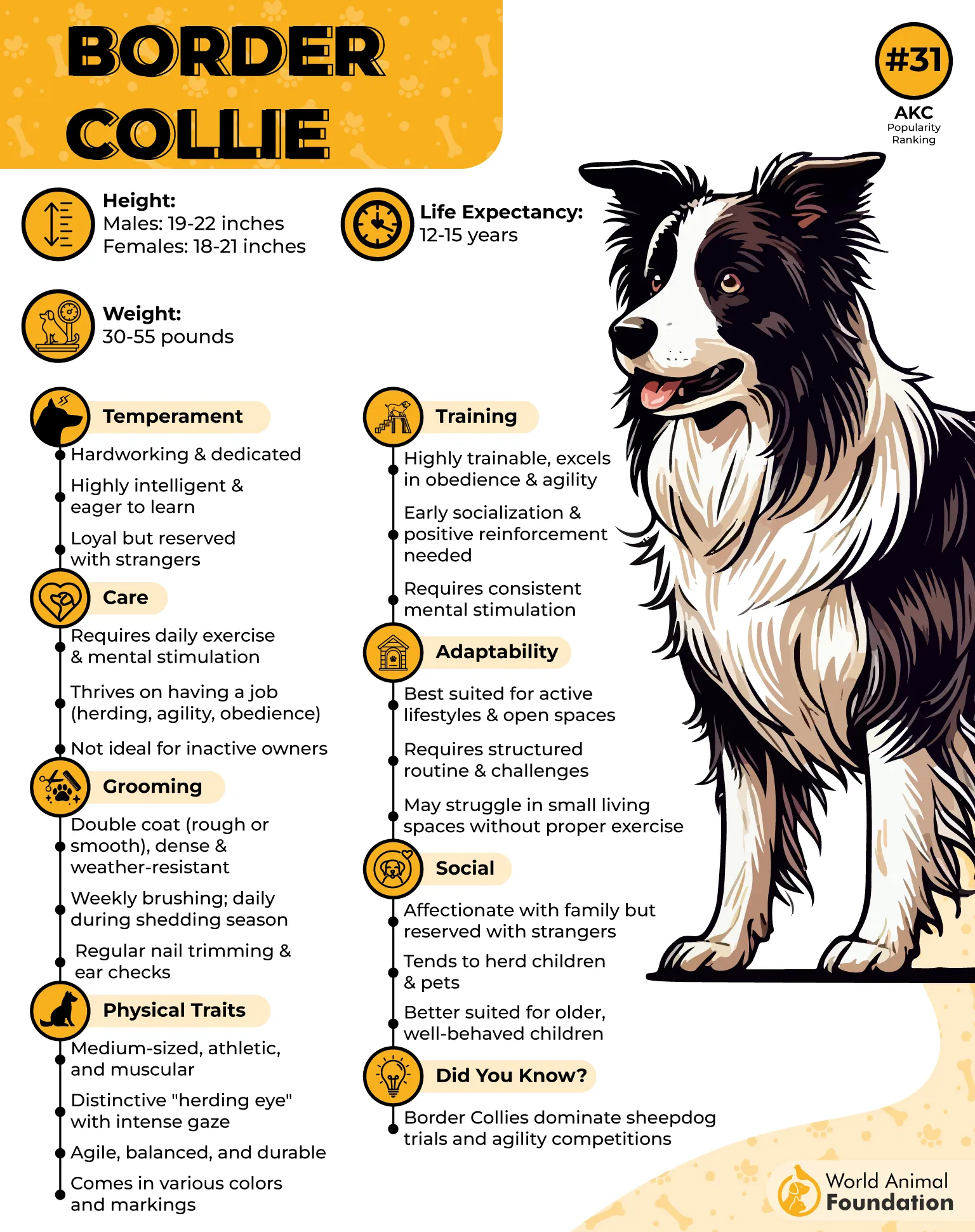
Why they’re perfect therapy dogs
Super intelligent– Can practically read your mind (and probably your calendar).
Endless energy – Keeps you moving and laughing, whether you like it or not.
Emotion radar – Picks up on your mood faster than your best friend.
Purpose-driven – Loves having a job to do, even if it’s cheering you up.
Loyal to the core – Will herd your bad vibes away like a flock of sheep.
Border Collies come in two primary coat types—smooth and rough—but no matter the type, they need weekly grooming. Fortunately, they usually don’t need haircuts or visits to a professional groomer.
Generally, Border Collies are friendly with other dogs and can also live peacefully with cats, especially if they’re introduced and socialized from a young age. Just don’t expect them to sit still for long. You’re more likely to find them organizing your sock drawer out of boredom.
2. Golden Retriever
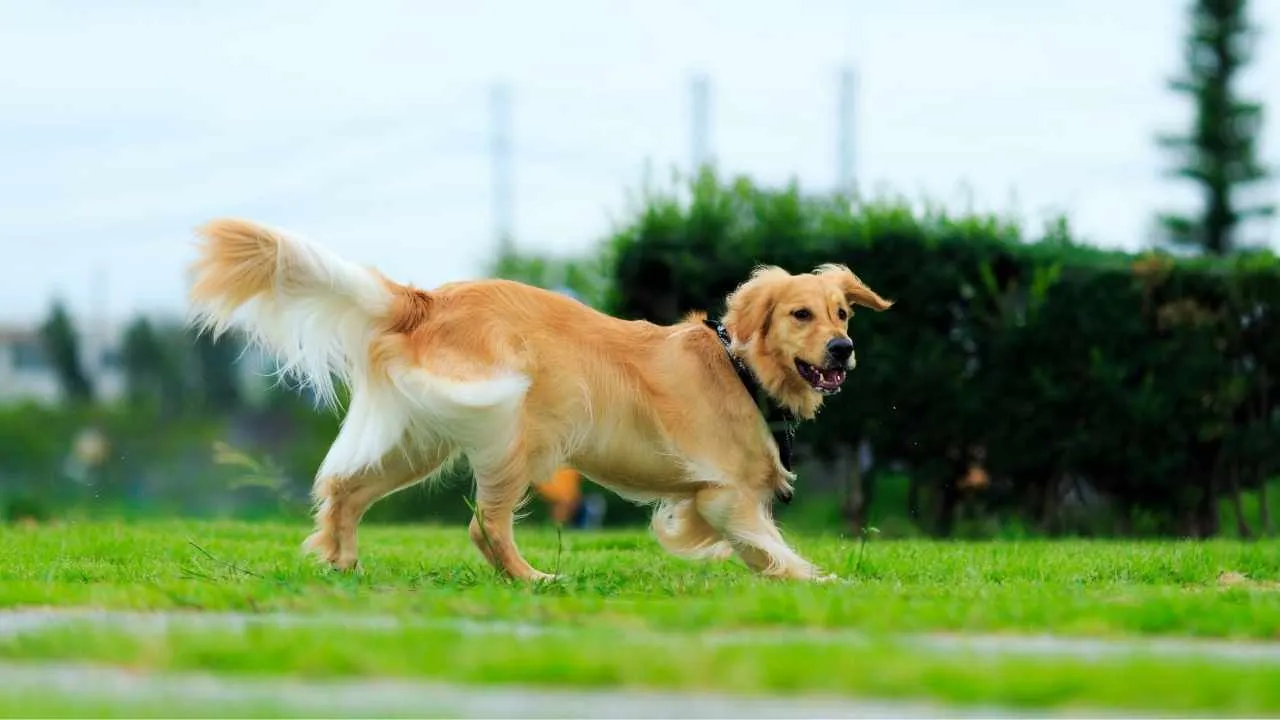
A Golden Retriever is what happens when joy grows fur. These fluffy bundles of sunshine are goofy, energetic dogs, so full of love, as if they were born to be therapy dogs.
Golden Retrievers are incredibly intelligent and empathetic, which makes them stand out in roles like service or therapy dogs. It’s no wonder they consistently rank among the top ten most popular breeds in the U.S.
In fact, according to Britannica, they’ve even been trained as guide dogs for the blind, showing just how versatile and compassionate they truly are.
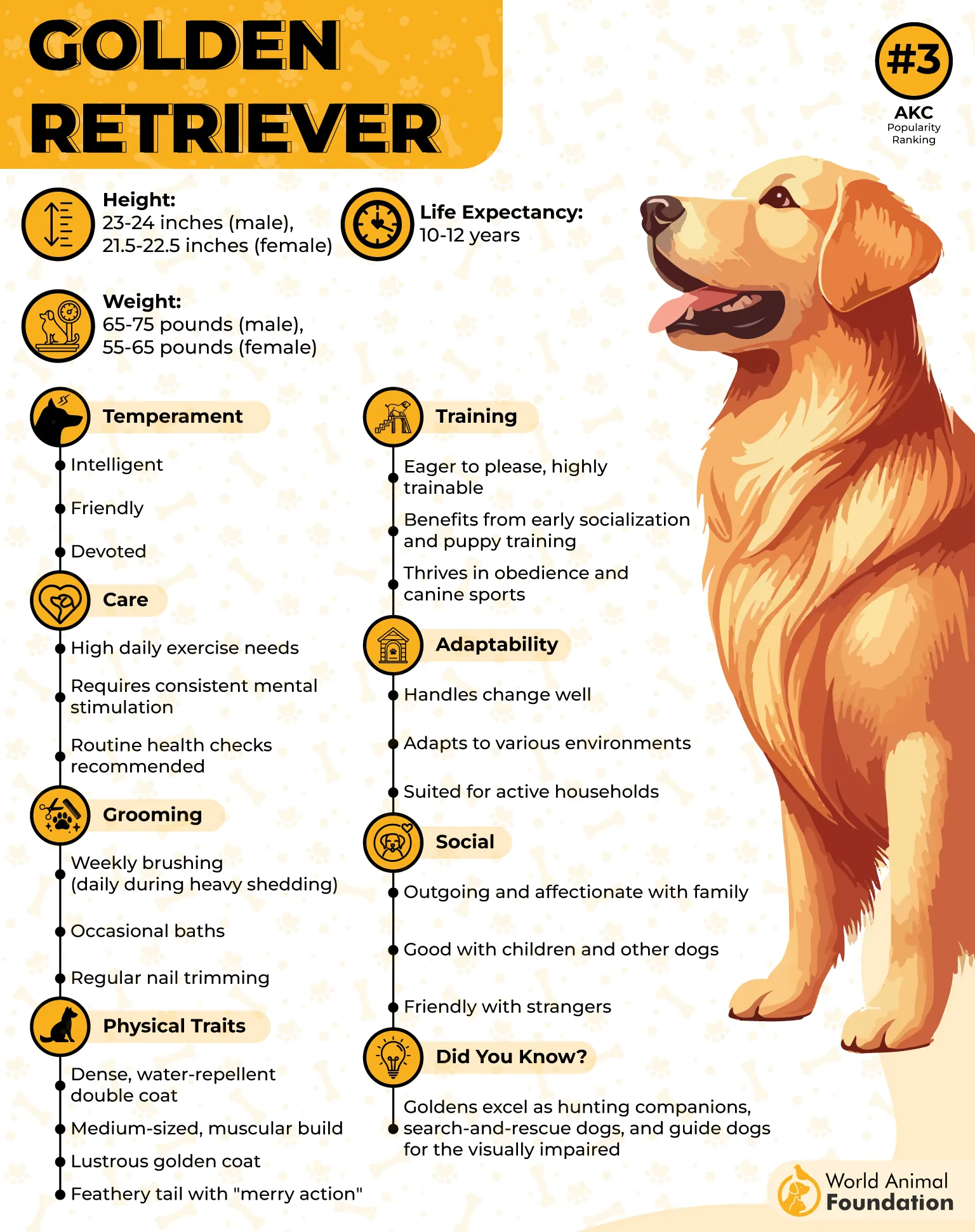
Why they’re perfect therapy dogs
Affectionate, loves everyone – Their default setting is full-body hugs and tail wags.
Goofy and joyful – One look and your bad mood packs its bags.
Great with all ages – A favorite for kids, seniors, and everyone in between.
Sensitive and intuitive – They know when you’re sad before you do.
Playful but gentle – A bouncing ball of therapy with fur and feathers (of fluff).
They’ll fetch your slippers, your newspaper, and your will to live—all in one run. Golden Retrievers seem to have an internal dial stuck on “love everybody” and an energy level set to “party mode.” But don’t let their excitable zoomies fool you—they’re incredibly attuned to human emotion and offer unmatched emotional support.
Golden Retrievers are known for their sweet, gentle nature. They have a friendly nature with kids, other pets, and even strangers. These social butterflies love being the center of attention and absolutely live for belly rubs and affection.
3. Poodle
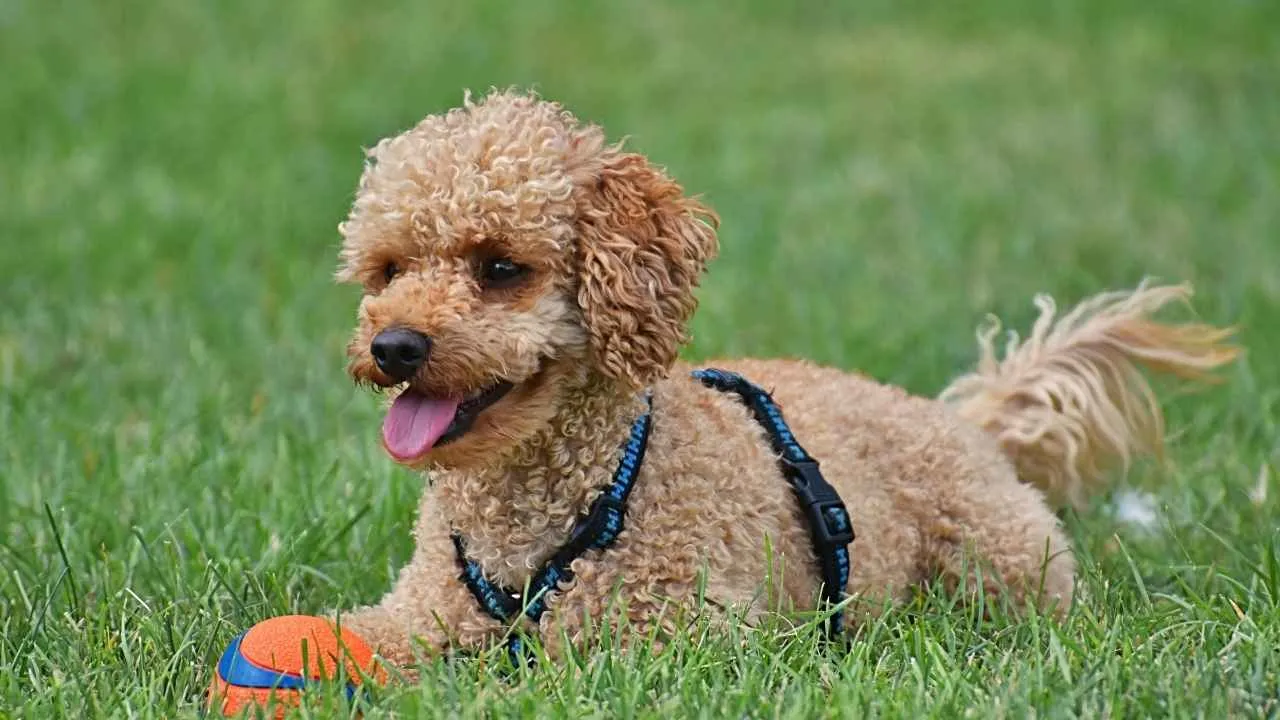
Ah, the Poodle. Fluffy. Fancy. Fast. And very likely smarter than you.
Underneath that glamorous haircut lies an athletic, agile, and hilariously expressive dog that can leap like an acrobat and solve puzzles faster than your smartphone. Poodles are like the overachieving honor students of the dog world—except they have a flair for drama and a serious case of the wiggles.
Whether it’s a Standard, Miniature, or Toy Poodle, they bring both brains and bounces to the therapy dog scene. They’re fantastic for people who need a little intellectual companionship paired with affection and high energy.
Why they’re perfect therapy dogs
Wicked smart – Solves your emotional puzzle and the Rubik’s cube.
Energetic elegance – Therapy with a twist of sass and style.
Hypoallergenic – Perfect for those who want healing without sneezing
Expressive and funny – Their dramatic looks will have you smiling through tears.
Trick-ready and highly trainable – Can do more than sit—they can entertain.
Poodles require a balanced, nutritionally complete diet designed for large breeds. If your Poodle gets several hours of exercise daily, a sport-type diet is ideal, as it provides the extra calories they need.
Due to their energy, Standard Poodles may be a bit too lively for small children and could accidentally knock them over during play. It’s essential to supervise interactions between children and pets.
Without enough regular exercise, physical and mental stimulation, Poodles can become agitated, so aim for at least 60 minutes of physical activity per day to keep them happy and healthy.
4. Labrador Retriever
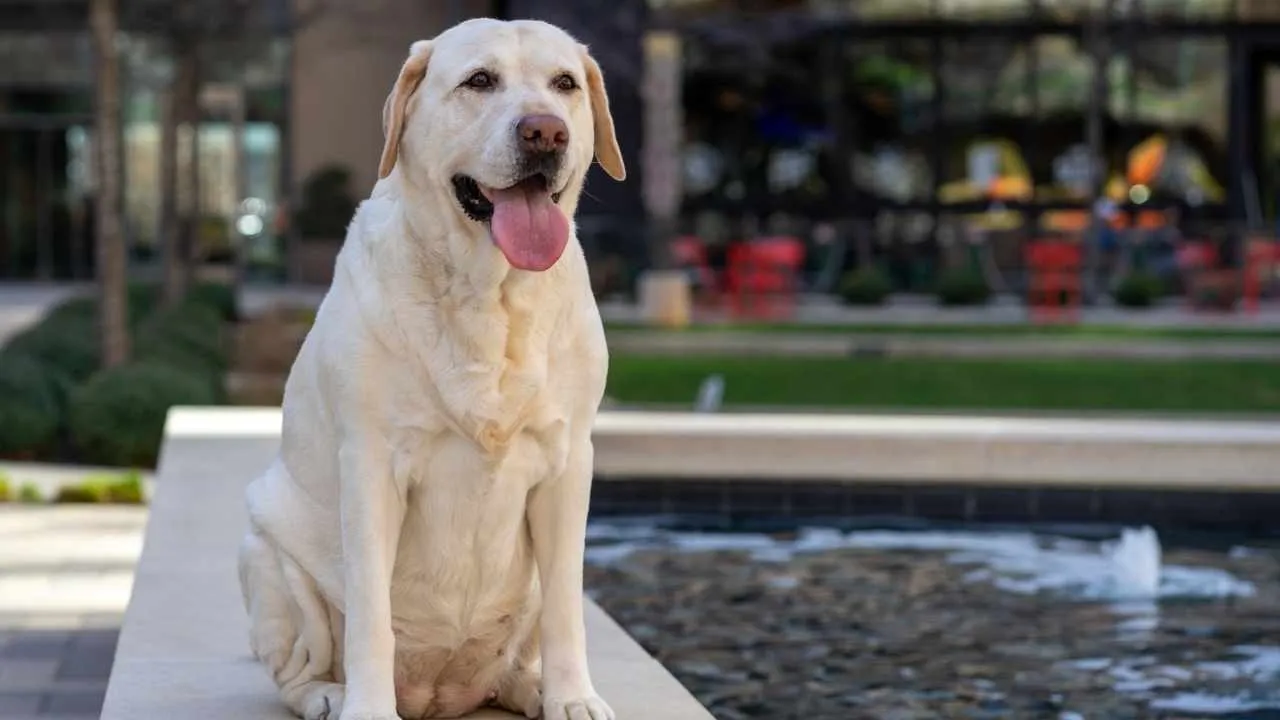
If Golden Retrievers are the huggable hurricanes, then Labrador Retrievers are their even more extroverted cousins. Labs are goofy, endlessly cheerful, and so friendly that they might even help a burglar move furniture—just for the chance of a belly rub.
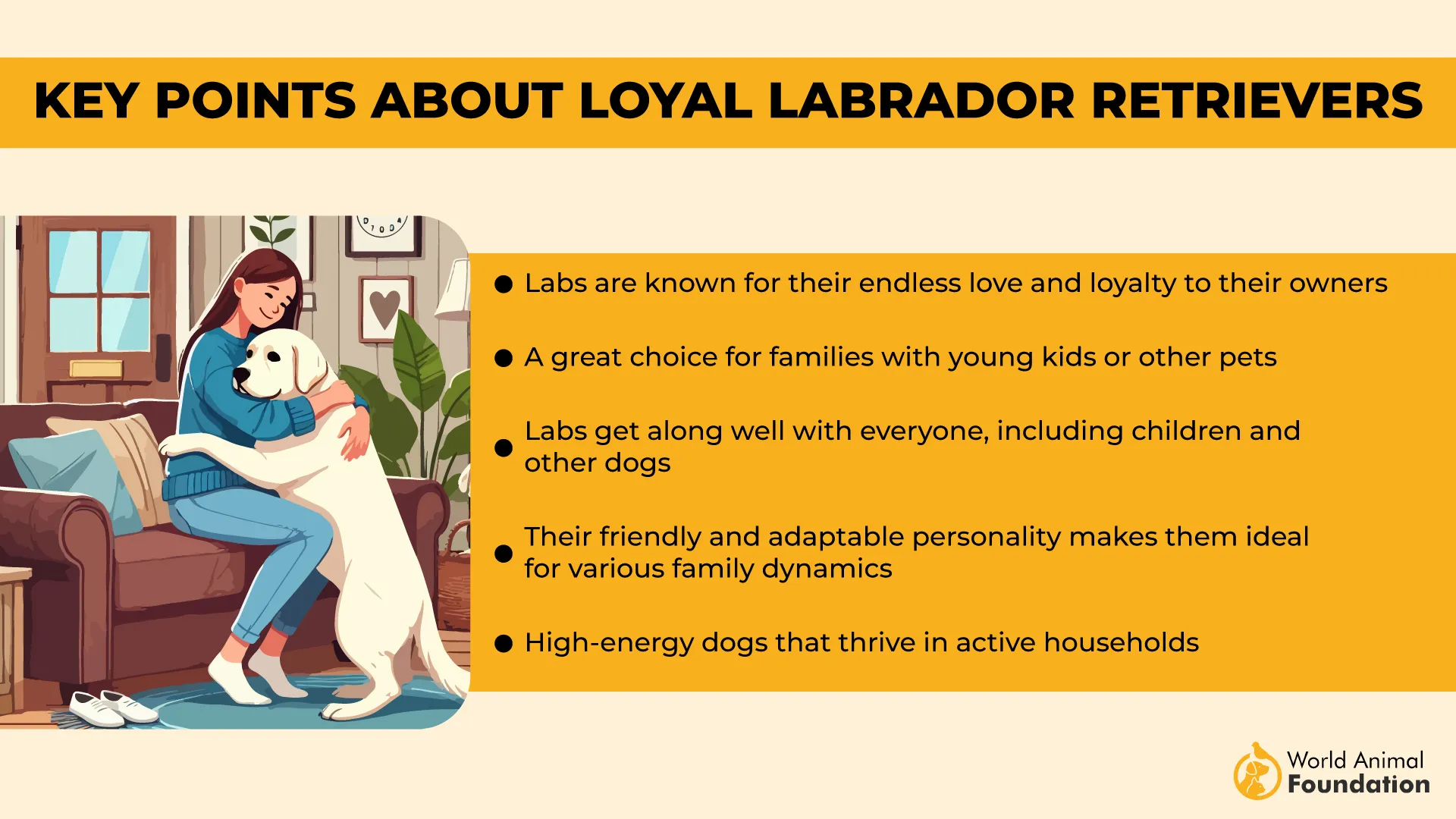
Originally bred as sporting and hunting dogs, Labs have transitioned seamlessly into companion roles, but they’re still used in many important jobs like guide dogs, assistance dogs, and therapy animals.
They’re medium to large with a solid, muscular build, strong legs, and shoulders, making them quick runners. Their iconic “otter” tail is thick and rounded, perfect for swimming.
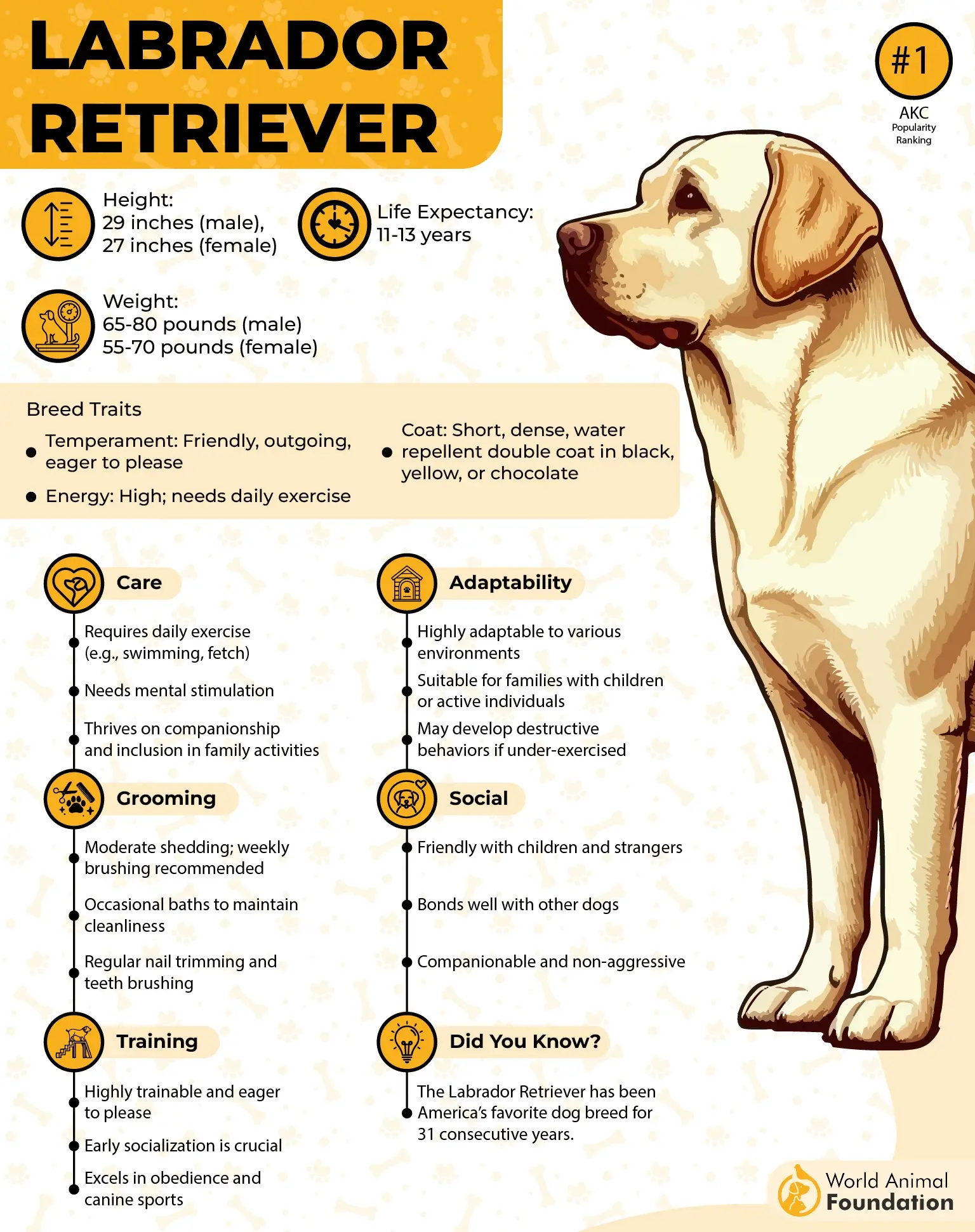
Why they’re perfect therapy dogs
Obsessed with play – Nothing cheers you up like a fetch session with a furry maniac
Affection experts – Their love is full-volume and nonstop
Positive energy bombs – They’re like furry antidepressants on four legs
Great with kids and seniors – They adjust their energy to match yours
Highly food-motivated – Training them is a piece of cake (literally)
They thrive on human interaction and have this incredible ability to sense when someone needs a little emotional lift. One big, tail-wagging cuddle session later, and boom—you’re either cured or at least smiling like you are.
Because of their high energy levels, Labs need plenty of exercise to stay mentally and physically fit. Without it, they can become hyperactive or destructive. So, whether it’s fetching, running, or a good play session, they’re always ready for action!
5. German Shepherd
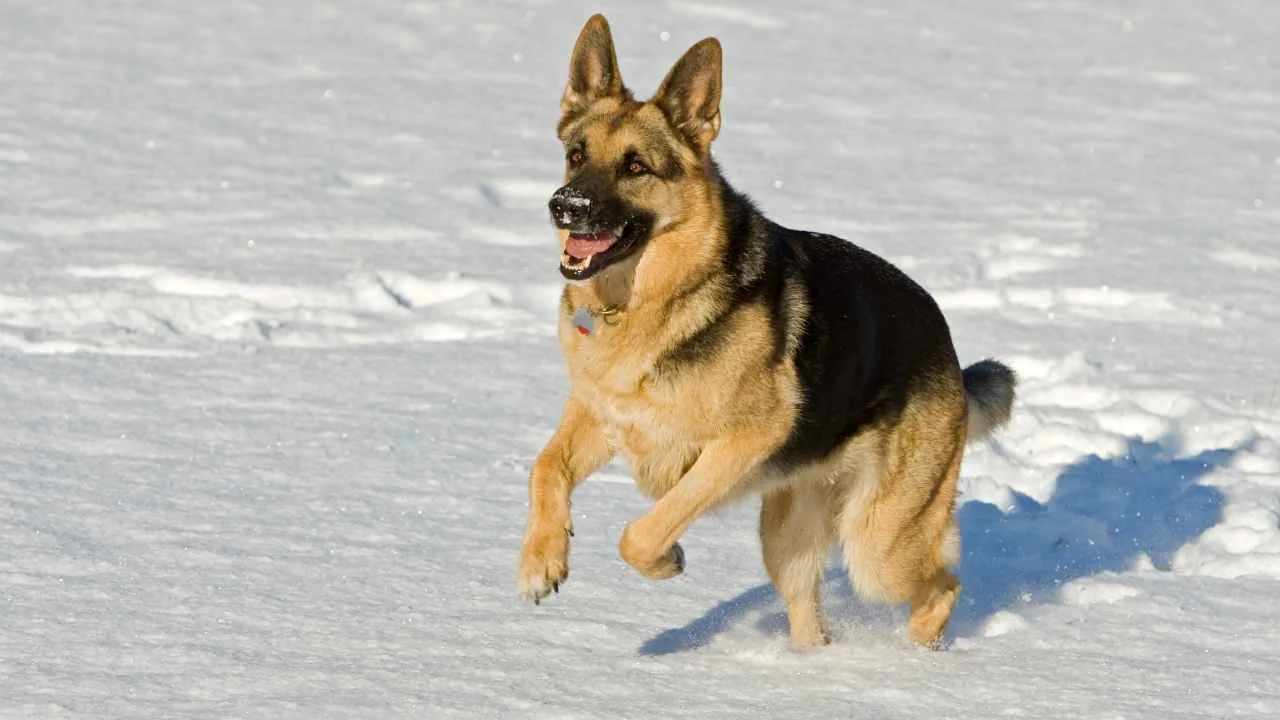
The German Shepherd is a medium to large-sized working dog originally bred for herding sheep. Over time, these versatile dogs have expanded into roles such as disability assistance, search-and-rescue, police work, and even warfare. Though commonly kept as a companion dog, they are known for their ability to excel in various tasks, as per Wikipedia.
Germans might have a serious and stoic appearance, but beneath that noble exterior lies a heart of gold—and occasionally, a little bit of drama.
These dogs are incredibly focused, protective, and extremely loyal, making them ideal therapy dogs who will make you feel safe, seen, and like you’re the most important person in the world.
Bonus: They also look like they’re about to solve a crime, which is oddly comforting.
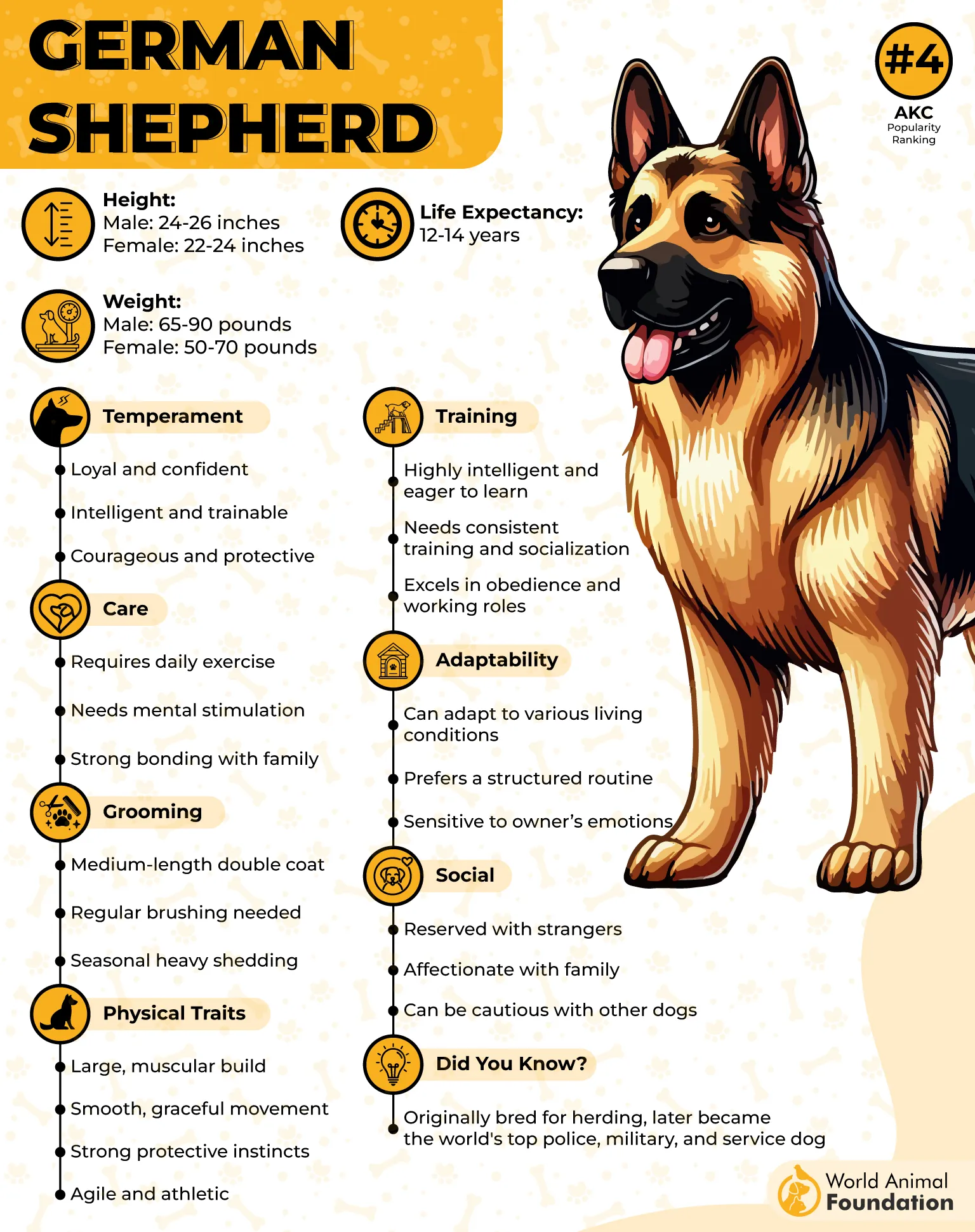
Why they’re perfect therapy dogs
Incredibly loyal companions – You’ll never feel alone again
Super smart and intuitive – They “get” you like your favorite therapist
Great listeners – They’ll stare into your soul while you vent
Protective but gentle – A comforting presence with just enough edge
Easy to train – They learn fast and take their job very seriously
However, if not socialized properly, they can become overprotective of their family and territory.
While they’re generally gentle with children and other animals, they may develop separation anxiety and behavioral issues like aggression may arise if they’re left alone for too long or don’t receive enough exercise.
6. Papillon

Don’t be fooled by their tiny size and butterfly ears—Papillons are packed with enough energy and personality to run a therapy session and still have time to host a tea party afterward. These little dynamos are affectionate, curious, and always up for cuddles or a chat (yes, they’ll even try to talk to you sometimes).
Known as one of the smartest dog breeds in the world, Papillons are happy, friendly, and love spending time with their humans. PetMD describes that they excel in agility training and often serve as therapy or service dogs, showcasing their versatility and intelligence.
Ideal for people looking for a lap-sized therapist with a Zoomies-per-minute rate of 10, Papillons are perfect for apartment living.
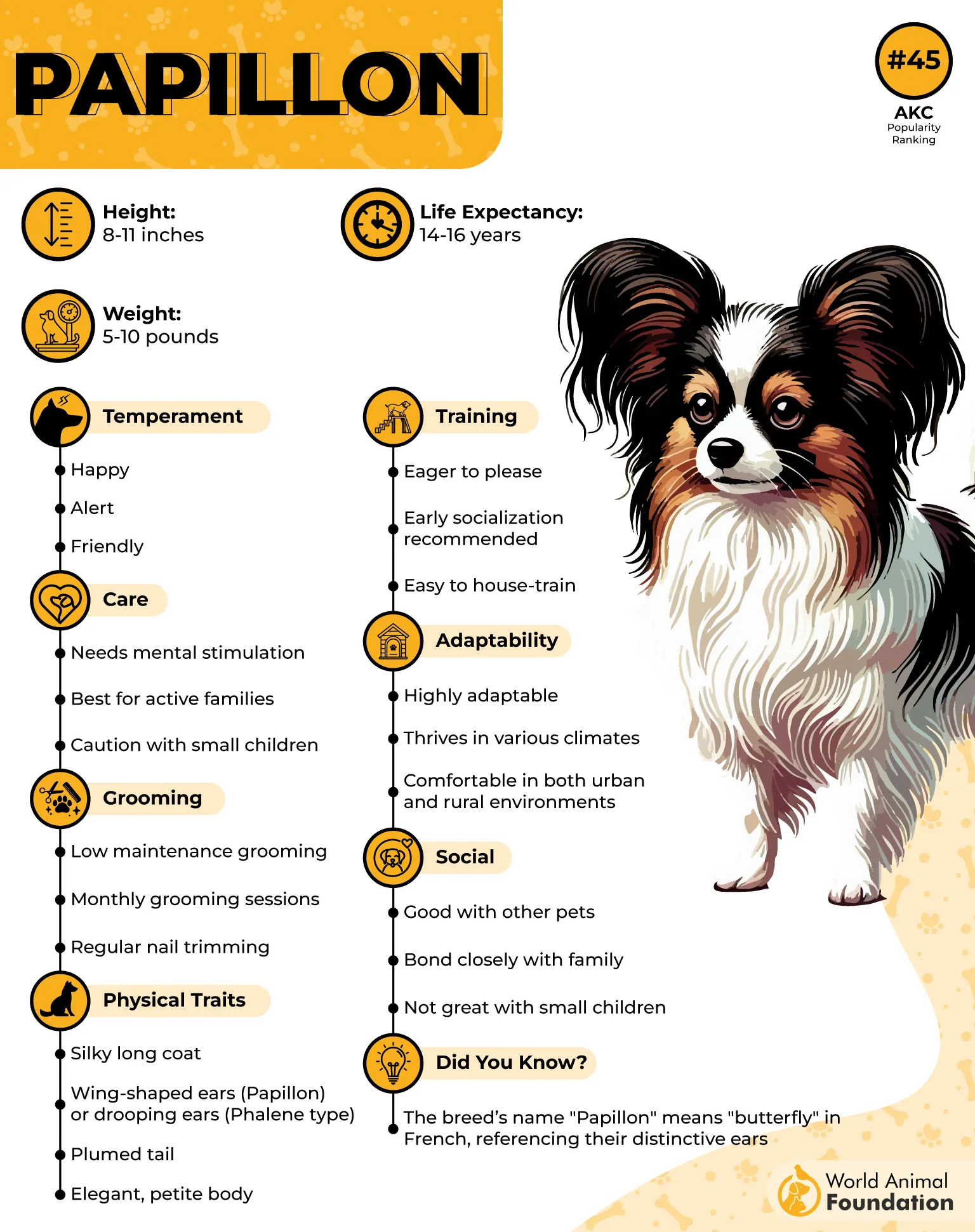
Why they’re perfect therapy dogs
Tiny but mighty – Fits in your lap but takes up your whole heart
Expressive and chatty – Great for those who want a perfect companion
Playful and upbeat – They’ll cheer you up and wear you out
Highly intelligent – Small dog, big brain
Low maintenance – Big personality without big messes
Their small size means they’re content playing with toys indoors, going for short walks, or running around in a fenced-in yard. They’re a little burst of joy that’s always ready to brighten your day.
7. Yorkshire Terrier
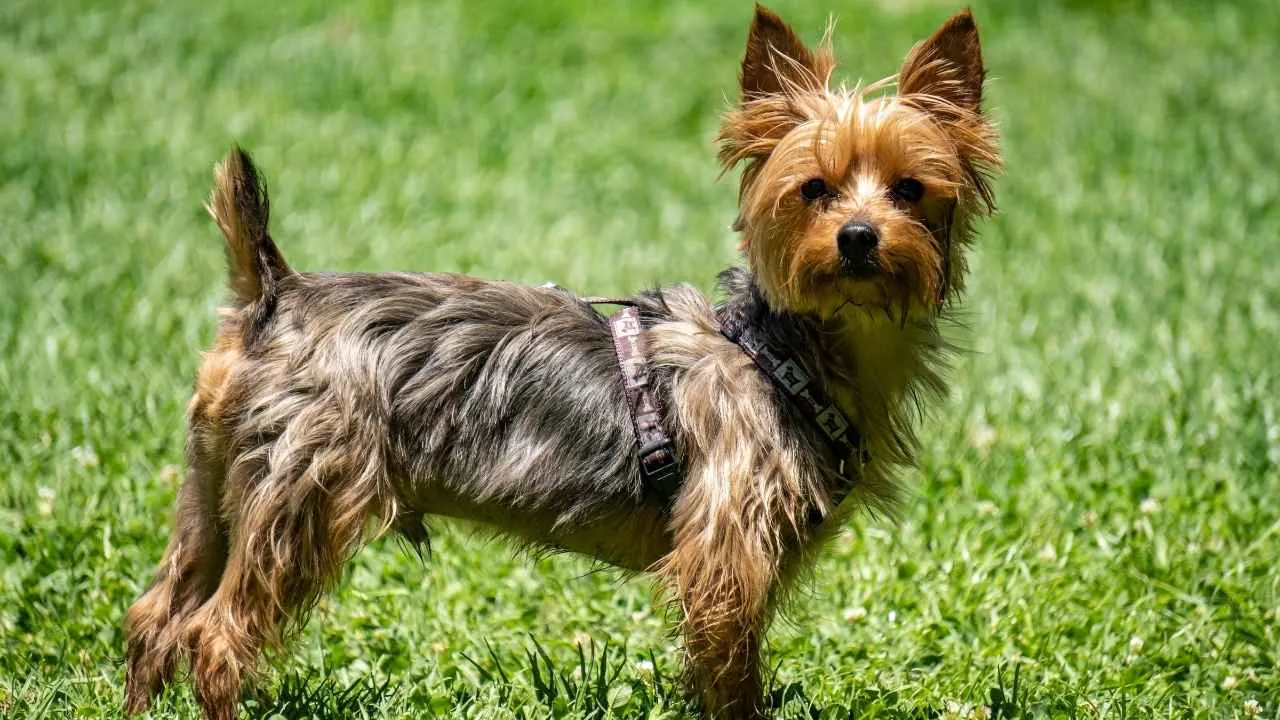
Often named the most popular dog breed in various American cities, Yorkshire Terriers—or Yorkies—cram a whole lot of big-town attitude into a pint-sized, self-important package.
Yorkies are living proof that therapy doesn’t always come in the form of a big slobbery hug. Sometimes, it comes from a 7-pound diva with silky fur, a sharp sense of intuition, and a heart of gold. These little charmers are sassy, affectionate, and brave beyond their size.
Think of them as your pocket-sized therapist who’ll both hype you up and call you out—with love, of course. They’re ideal for apartment dwellers or anyone who wants their therapy with a dose of glamour and grit.
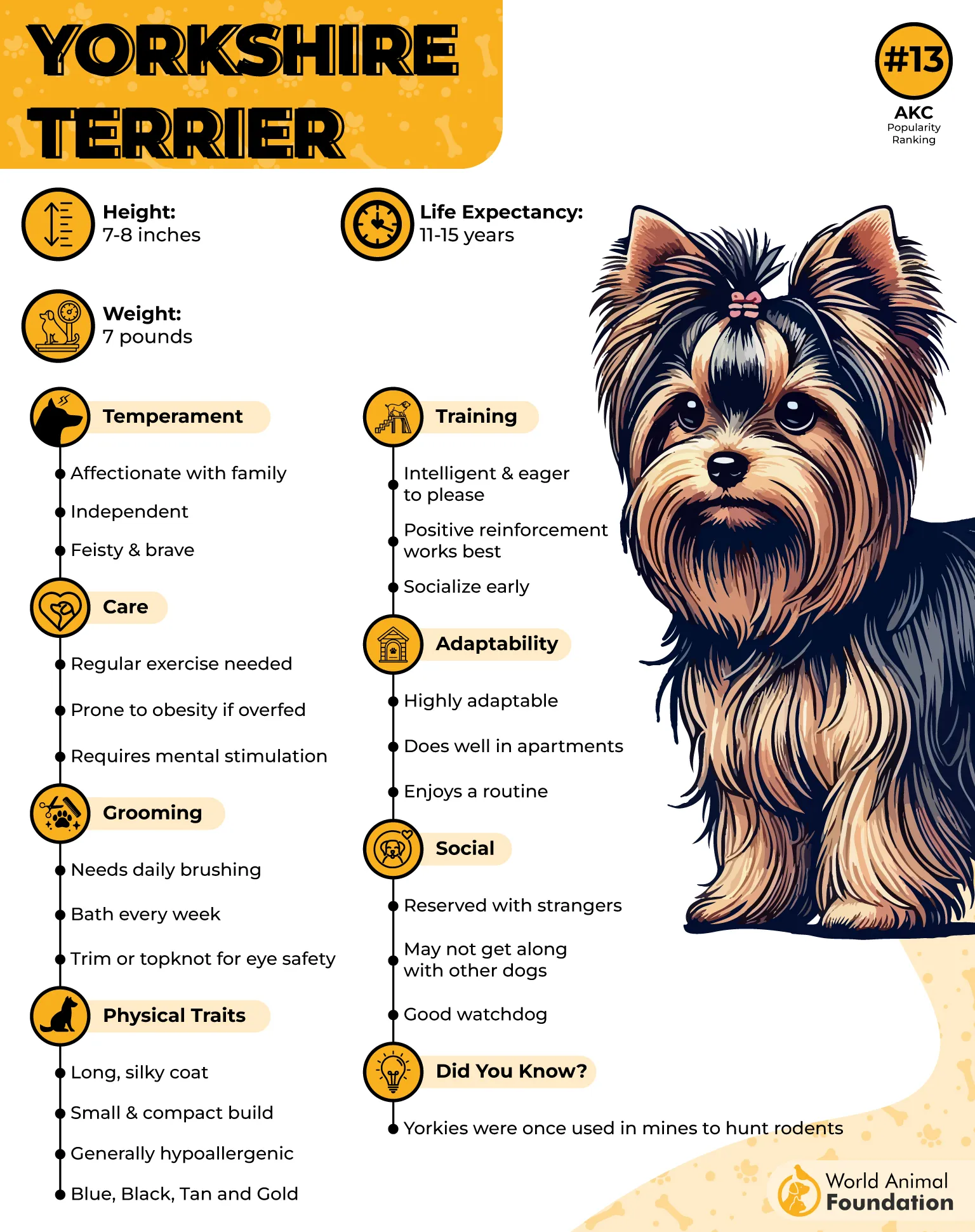
Why they’re perfect therapy dogs
Small, cuddly, and portable – Fits in your arms and your emotional support bag
Big personality – Full of spunk and confidence
Very smart – Quick learners with a stubborn (but lovable) streak
Velcro dogs – Stick to you like your most loyal bestie
Communicative – Expect sass, love, and lots of dramatic sighs
Despite their size, Yorkies have oversized personalities and often believe they’re much bigger than they are, which can lead to a little too much barking if not managed early.
Training goes best with positive reinforcement, using praise and tasty treats. Keep sessions short and playful—your Yorkie’s attention span may be small, but their enthusiasm for bonding is endless.
Conclusion
When it comes to selecting a hyperactive therapy dog breed, several key characteristics come into play, such as the dog’s need for physical stimulation, daily exercise, and their ability to reduce stress or improve focus. While breeds like Border Collies, Golden Retrievers, Poodles, Labrador Retrievers, and Yorkshire Terriers often stand out for their therapy potential, other breeds like the Cavalier King Charles Spaniel, Bernese Mountain Dog, Cocker Spaniel, and Australian Shepherd make great emotional support dogs. These dogs excel in providing comfort and support for their owners, helping with specific tasks such as managing panic attacks, alleviating ADHD symptoms, or decreasing impulsivity.
For these active dogs to truly thrive, it’s important to provide them with the right training classes, consistent veterinary care, and plenty of long walks. By teaching them new tricks and ensuring they have enough physical activity, you can help reduce stress, improve focus, and create a well-rounded companion that’s both physically and emotionally fulfilling. Whether they’re working to help with panic attacks or simply offering unconditional love, hyperactive therapy dogs are invaluable members of many families, offering support and companionship that’s both playful and purposeful.


